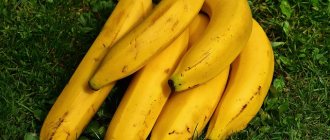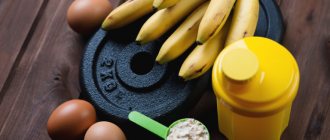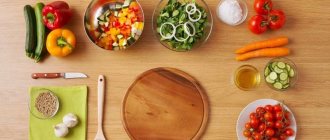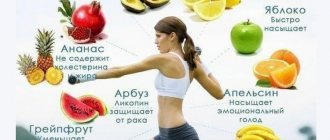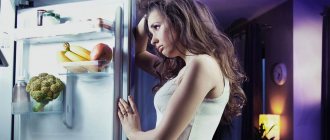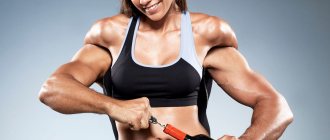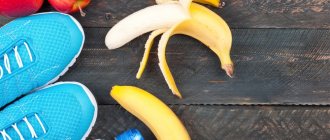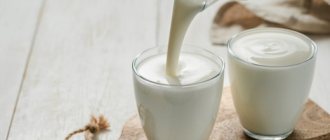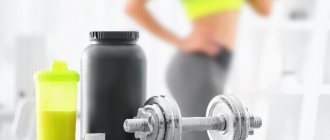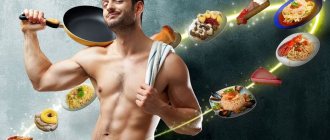Not so long ago, eating before starting a workout was considered not only undesirable, but even harmful. This position of nutritionists and sports instructors was argued by the fact that a full stomach “attracted” blood to itself, diverting it from the muscles, and the heart suffered doubly due to the loads that were created in such conditions. But over the past decades, many scientific refutations of this theory have appeared. And now the athlete’s desire to know what to eat before training demonstrates his desire to stay healthy and improve his performance in the gym.
The importance of eating before exercise
During exercise on exercise machines or a treadmill, muscles become the main consumers of energy. But extracting it directly from fat deposits is a long and ineffective process if energy is needed here and now. Therefore, muscles use their own reserves of glycogen, which provides them with endurance and strength. Exercising on an empty stomach quickly depletes this substance. And instead of the expected result in the form of building muscle mass and burning calories to lose weight, you only experience severe fatigue, which does not allow you to complete your workouts. In addition, blood sugar levels drop sharply, which can cause dizziness, critical levels of weakness, and even loss of consciousness. All of these consequences can be avoided, while increasing the productivity of your workouts, if you choose the right foods for your pre-workout meal*.
Is it possible to eat bananas before training?
On the question: is a banana useful before a workout, the opinions of experts are divided.
According to some, after eating the fruit, sugar levels rise sharply, insulin production increases, and energy and vigor appear. The negative point is the short duration of the effect. As a rule, the energy effect from eaten fruit lasts no more than half an hour. During physical activity, a person feels tired, the body needs a new portion of carbohydrates, for which it is necessary to make a “window” during exercise for a short snack.
Proponents of the “banana diet” claim that eating a banana before training is a must. While satisfying the feeling of hunger, they do not eliminate the stomach overload inherent in standard meals, and also provide energy replenishment that promotes activity during exercise.
In any case, one fruit eaten 30 minutes before the start of sports activities eliminates negative consequences.
General principles of nutrition before physical activity
Regardless of what purpose you are training for, there are several “universal” rules to follow.
Practice moderation
. The portion of food should be very small. Under no circumstances should you overload your stomach or simply fill it. If under normal conditions you need to finish eating before you feel full, then before training you should get up from the table even earlier. The main guideline is a slight feeling of hunger, which should remain after eating.
Remember that any food is better than no food
. In this case, this does not mean fast food, but any healthy snack. If you don't have the time or ability to prepare and eat a pre-workout shake, natural yogurt, a poached egg, a banana, or any other food that provides sufficient energy and stamina, but falls into the category of healthy food, will save the situation.
Eat beforehand
. Finishing a protein bar while getting on the exercise bike is a bad idea. Organize your training and nutrition schedule so that the interval between meals and exercise is at least 20–30 minutes. This time will be enough for carbohydrates to be included in energy metabolism and provide you with endurance by the time you start physical activity.
Consider KBJU sports nutrition
. Depending on your training goals, your approach to nutrition before exercise also changes. But this meal is often perceived as “transit”: calories, proteins, fats and carbohydrates are consumed during physical activity and do not play any other role. With this approach, you can get unexpected results: instead of losing weight - an increase in muscle mass, and instead of a clear relief when drying - a noticeable weight gain due to subcutaneous fat. Therefore, always include the KBJU portion of your pre-workout portion into your overall calorie and nutritional value.
Use sports nutrition.
This is one of the most rational and simple ways to provide the body with everything it needs for a productive workout, control the number of calories consumed and maintain the correct balance of nutrients. Thus, the Formula 1 protein shake from Herbalife Nutrition includes proteins, fats, carbohydrates, vitamins, minerals, PUFAs, and fiber in the ratio necessary to maintain a high level of energy when losing weight. In addition, this complex is available in different flavors (vanilla, chocolate, strawberry and others), and its preparation takes a couple of minutes, which is very convenient if you do not have the time or desire to cook before training. With this cocktail you will always know how much KBJU you consumed.
Consult a specialist
. Today there are a huge variety of approaches to sports nutrition. They are based on body type, the desired outcome of training, the person’s initial data, the characteristics of his metabolism, the intermediate results of diets and sports, the intensity of exercise, etc. Therefore, it is important to consult with a sports nutrition specialist before making a choice the benefits of this or that system, and receive recommendations for adjusting your diet and training regimen if you are not satisfied with the intermediate results (insufficient muscle mass gain, “plateau effect” when losing weight, etc.).
How to eat before and after training?
“I have said many times and will repeat again that proper nutrition during training is three-quarters of success in building the body of your dreams. I sincerely think so. And quite often I hear the following phrases from my clients: “I don’t have breakfast/lunch before training,” “I don’t eat after working out in the gym,” “Why do I work out intensely and constantly, but I don’t feel any visible results?” You know, of course, you can work hard, increase the load, “pull” dumbbells and barbells, build muscles, lose weight or fat, but if the body does not receive the required amount of the right nutrients that ensure the internal balance of elements, then everything is yours and our efforts may be in vain.
What we eat before and after training directly affects the results we ultimately get. Therefore, if you really want to see the effect of your (and our) training, then we will achieve this only by adding adequate balanced nutrition to strength exercises and aerobic exercise. Taken together, these actions will ensure the desired result, and you will see how your body will change and your muscles will be built.
First, you should think about the goal that you want to achieve by working out in the gym. Everyone has their own goal, their own motivation, their own desired result: simply lose weight, reduce (or, conversely, increase) the numbers on the scale, or reduce the fat layer while maintaining muscle tissue. If we mean the latter situation, that is, reducing body fat by preserving muscle, then the goals that proper nutrition will help us achieve will be the following: reducing the resolution of muscle tissue proteins, reducing the depletion of muscle glycogen and reducing the level of the breakdown hormone, which is cortisol after strength training. Then, based on these goals, we will select adequate nutrition. What will it be like? Carbohydrates before training, and definitely complex carbohydrates, will provide you with the necessary energy, without which an effective workout will not occur. Proteins will be used by the body as a source of amino acids for working muscles. The fats you eat should be in minimal quantities. This is explained by the fact that fat in food slows down the absorption of other beneficial nutrients, and it takes a long time for it to be broken down and absorbed by the body. In addition, naturally, fatty foods will stay in the stomach longer and cause discomfort, interfering with the normal digestion process.
Eating before starting a workout. What should it be like?
- Firstly, it should be no later than 2 hours before physical exercise, because a full stomach will interfere with a full workout: the blood supply will be directed not to the working muscles, but to the gastrointestinal tract.
- Secondly, the amount of food eaten should be small. Imagine that all the food you eat before your workout could fit in the palm of your hand.
- Thirdly, nutrition should include: protein (this is approximately half a gram per 1 kg of ideal body weight) and carbohydrates (also approximately the same amount per 1 kg of ideal body weight). As I already mentioned, these carbohydrates should be complex: black porridge, vegetables for fiber and whole grain bread.
- When the workout is over, a lot of endorphins have been received, but physical strength is running out, the question arises: “What to do? What and how to eat? It is important here that meals should be taken 30 minutes (but no more than an hour) after training. Well, that is unless you're a fan of drinking protein shakes right after your workout. Professional athletes accept (and actively use) this “method” of nutrition after training, since protein shakes are considered very nutritious and saturate the body well with protein.
What are your post-workout eating goals?
First, it increases muscle glycogen, which was depleted during training. Secondly, reducing the breakdown of muscle tissue proteins. Because if we have a predominance of muscle tissue, then, accordingly, there will be less space left for fat. Thirdly, an increase in muscle protein synthesis, simple recovery after exercise and a decrease in muscle soreness. And finally, fourthly, the goal after training is to reduce cortisol levels. And, accordingly, based on these goals, it is already worth choosing adequate nutrition. How will he feel about it? All the same proteins and carbohydrates. Only here is it permissible to include a small amount of simple carbohydrates in the diet: fresh fruits, for example, bananas, some vegetables, a small amount of potatoes is acceptable, but its content should be small (about 0.3-0.2 grams per 1 kg of ideal weight).
Thus, we achieve an increase in insulin levels. This hormone has anti-catabolic properties. In addition, carbohydrates contribute to better absorption of protein and are used to replenish expended energy - glycogen, which will be stored in the muscles. It turns out that if the body does not receive enough carbohydrates after training, then muscle tissue will be destroyed under the influence of catabolic processes.
If the workout took place in the evening, for example, began at 18:00 or 19:00, and ended at 20:00 or 21:00, then the dinner after the workout should consist of protein foods - it could even be seafood, since they are more easily dissolved, broken down and absorbed by the body. Well, you can add a portion of non-starchy vegetables to the proteins, that is, these should not be root vegetables (cucumbers, peppers, fresh tomatoes). Seafood means low-fat fish, which should also be in the amount of 0.5-0.4 grams per 1 kilogram of weight. Yes, I also wanted to mention one important clarification: the fat burning process will not start immediately after training, that is, fats will not be used for energy supply immediately after training, but already during night sleep.
In general, of course, we should not forget that nutrition before and after training should be selected directly to suit your body. You can try several nutritional methods, because each body is individual, you need to learn to listen to your body. In fact, only it will properly tell you how, what and when to eat, so be guided by sensations. Don't be afraid to experiment. Consult your instructor. Stay young and healthy. Good luck!
Why do tennis players eat bananas during matches?
It is believed that back in the 1980s, the benefits of the product were appreciated by famous tennis players Martina Navratilova
and
Boris Becker
. Soon, others adopted the idea of a quick and nutritious snack. Now bananas are rightfully considered “athletes’ food.” They say that tennis players eat five of them per match. And there are reasons for this - one fruit contains the entire necessary set of micro- and macroelements. The berry contains vitamins B6 and C, potassium, copper, magnesium, manganese, iron, fluorine, calcium, phosphorus.
Photo: unsplash.com/@shootdelicious
The product has a low glycemic index (51). That is, it is quickly absorbed and instantly “recharges”. Plus, per 100 g of product there is 75 g of water, so it helps cope with dehydration. Another reason tennis players love bananas is that they are easy to eat. This is convenient, given that players are given no more than a 120-second break between games, and no more than 90 seconds when changing sides.
In addition, bananas help cope with stress - they contain tryptophan, which increases the level of serotonin, the hormone of happiness. Another element that promotes good health is gamma-aminobutyric acid, which is also found in the fruit.
What foods should you eat only at the “right” times?
3 most harmful products for athletes. What should you give up while training?
Olga:
One medium banana contains the necessary amount of potassium to restore water-alkaline balance, which is important for athletes who sweat profusely. Plus, the mineral helps fight muscle cramps, which often happen during intense workouts. B vitamins in bananas are necessary for the restoration of the central nervous system and muscles. The product also contains a lot of pectin - it promotes the growth of healthy microflora and normalizes intestinal function. In this case, valuable substances are absorbed better, and this, in turn, is the key to quality training. And, of course, banana is a source of fast (simple) carbohydrates, which quickly replenish the resources spent during training and provide energy.
Harm and contraindications of eggs
Despite the important role of eggs in our diet, this product can be harmful to the body under certain conditions. What are the negative effects of this product?
- With excessive consumption of eggs, the liver suffers, harmful cholesterol accumulates in the body, which contributes to the development of atherosclerosis.
- An egg that is not thermally treated can cause a serious illness - salmonellosis.
- To ensure survival, chickens kept in poor conditions are given antibiotics in their feed, which are then laid in their eggs. This reduces a person’s immunity and susceptibility to drugs.
- Poor quality chicken feed contributes to the accumulation of nitrates in eggs, which have a negative effect on the human body.
- Egg is a product that often causes allergies.
It is not recommended for allergy sufferers to eat eggs. People with diabetes, cholecystitis, obesity, or high cholesterol should significantly limit their consumption of the product and include it in their diet only on the recommendation of a doctor.
Is it possible to eat eggs while losing weight?
Eggs are not only one of the healthiest foods, but also the best ones for weight loss. This feature is explained by their special properties.
- A small amount of calories (about 78 in one egg) corresponds to the main principle of weight loss - reducing the calorie content of food consumed.
- High protein content gives you a feeling of fullness: you want to eat less.
- Egg whites are rich in amino acids that stimulate metabolism, which is very important for the weight loss process.
- Eggs have a “thermogenic effect”: they contain a lot of protein, it takes a lot of energy to break it down, and as a result, calories are actively burned.
On a note.
The best time to eat eggs is morning. Scientists have proven that if a person eats an egg for breakfast, he consumes fewer calories throughout the day than when he eats, for example, a croissant with the same energy value!
Quail eggs
Quail eggs are a worthy alternative to chicken eggs. Firstly, they are suitable for those who are allergic to the latter. Secondly, they are in no way inferior, and in some ways superior to the usual chicken eggs. So, what are the benefits of this product?
- They are not susceptible to salmonella contamination: they can be eaten raw and even with the shell on.
- They contain lysozyme, a substance that kills bacteria, so they do not become contaminated or become infected.
- They have low calorie content.
- They contain 2.3 times more vitamins, 5 times more potassium and phosphorus, 4 times more iron than chicken eggs.
- Increases hemoglobin levels and stimulates potency.
Quail eggs are drunk raw or boiled for 30 seconds. During periods of intense physical activity, men are recommended to eat 10-15 eggs per day, women – 6-7. Half of the norm is for breakfast, the other half for the last meal. After a month you need to take a break for 2-3 weeks.
